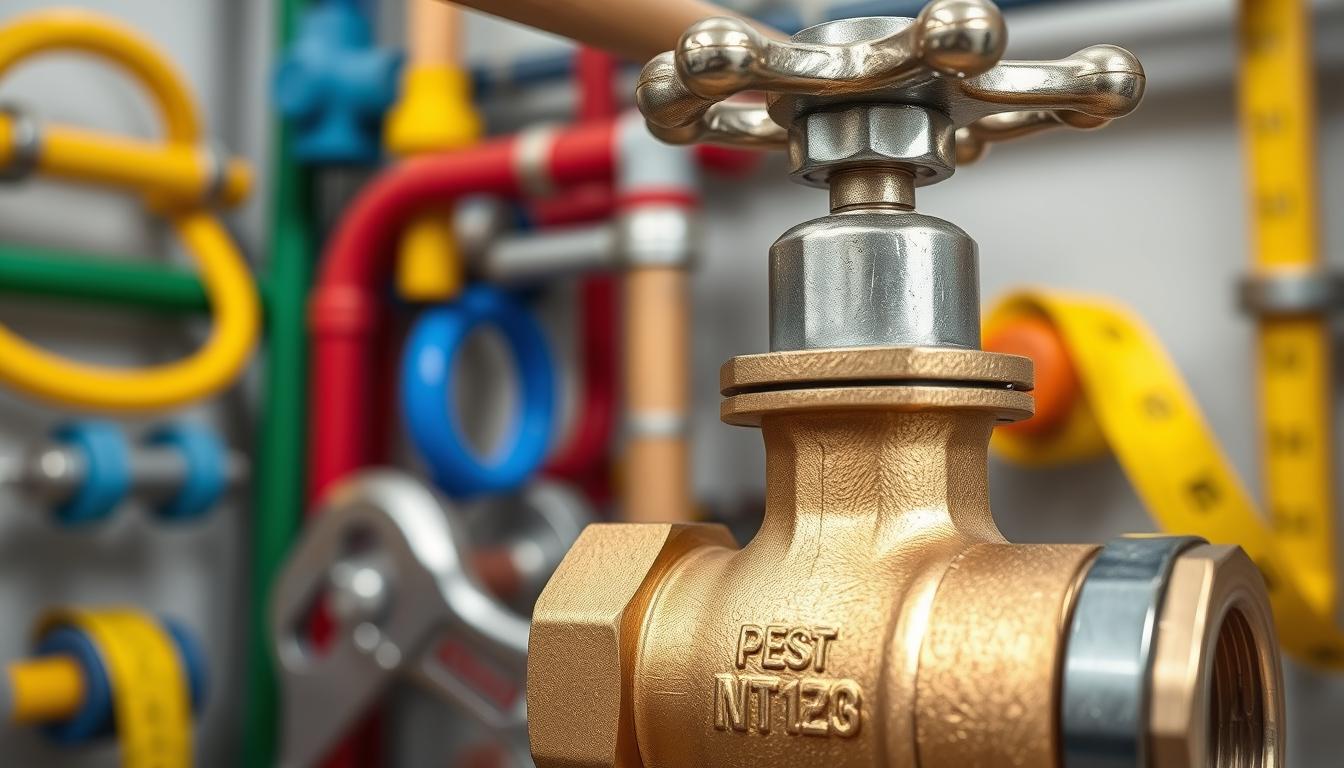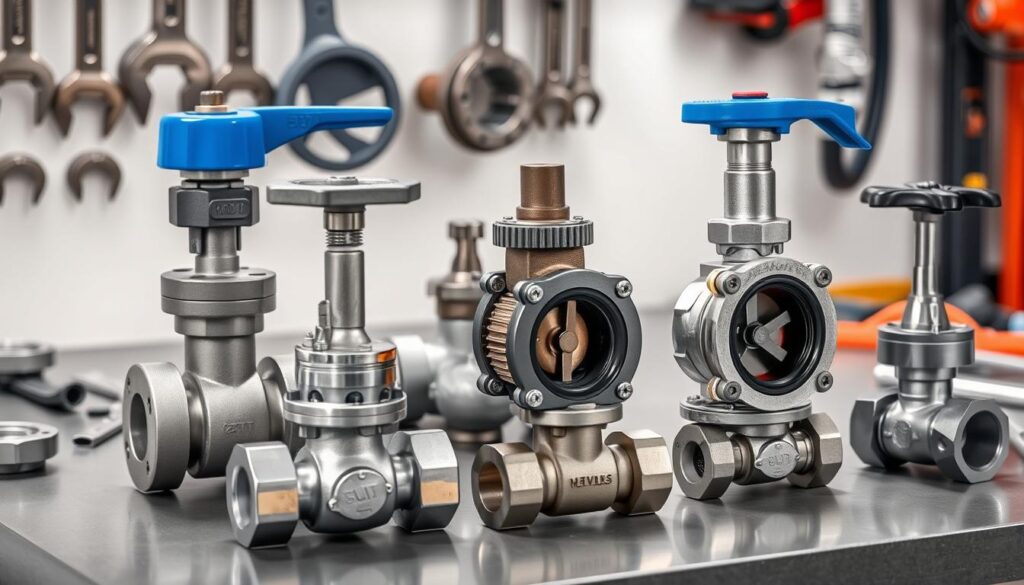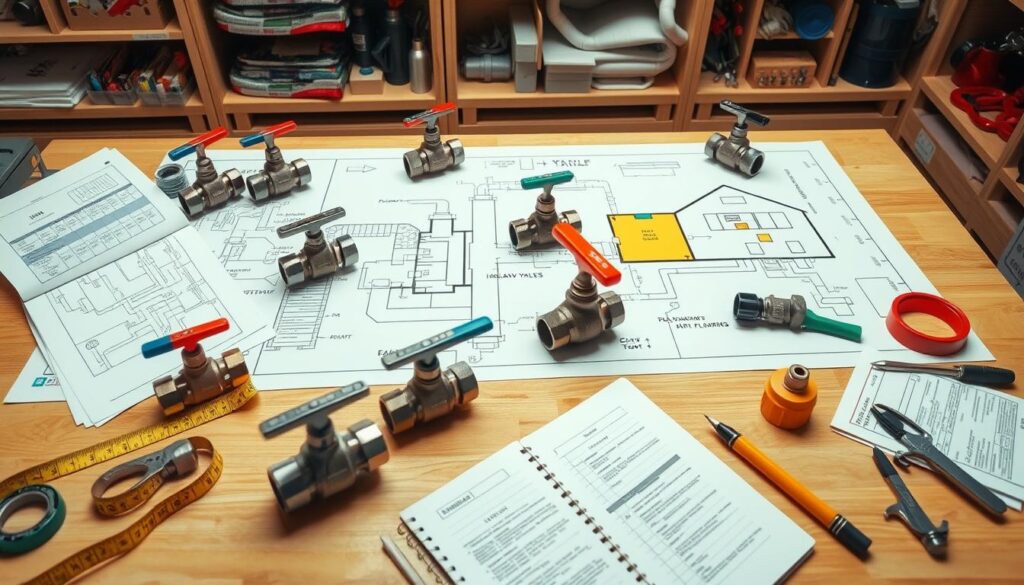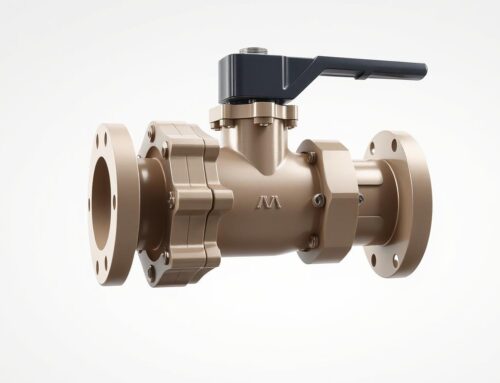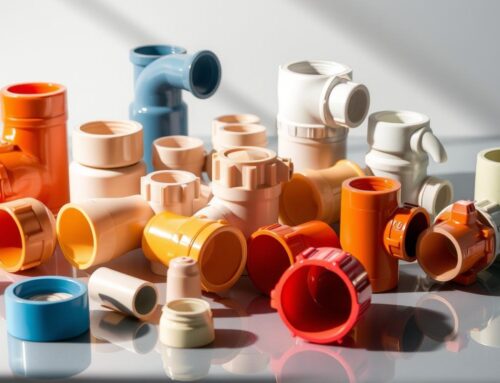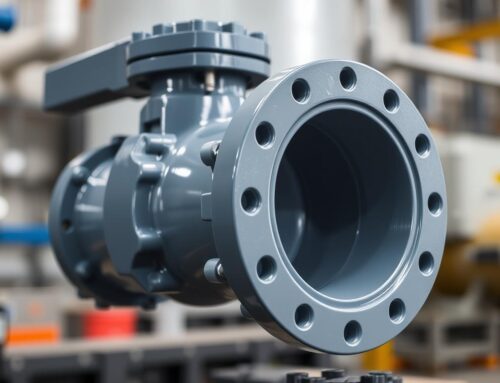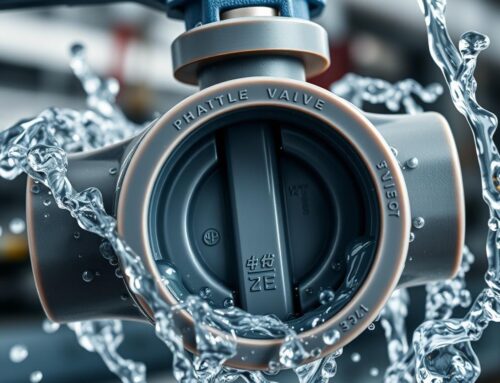Ball valves are essential components in plumbing systems, catering to both industrial and residential applications. These valves allow for smooth flow control and blockage through a ball-shaped handle with a 90-degree rotation. This comprehensive guide covers the selection criteria, installation techniques, and maintenance tips for threaded ball valves, focusing on their importance in water and gas pipelines.
Key Takeaways
- Ball valves provide efficient flow control and shut-off capabilities in plumbing systems.
- Threaded ball valves are available in various materials, including brass, carbon steel, and stainless steel, each with unique performance characteristics.
- Proper size and pressure rating selection are crucial for ensuring the valve’s compatibility with the plumbing system.
- Installation techniques, such as proper alignment and sealing, are critical to prevent leaks and optimize valve performance.
- Regular maintenance and troubleshooting can help extend the lifespan of ball valves and maintain the integrity of the plumbing system.
Understanding Ball Valve Basics
Ball valves are a widely-used type of water control valves, shut-off valves, and HVAC valves, known for their simple yet effective design and reliable performance. These valves function by using a spherical obstructor with a hole that allows flow when aligned and blocks it when rotated 90 degrees. This straightforward mechanism makes ball valves a popular choice for various plumbing and industrial applications.
How Ball Valves Function
The core component of a ball valve is a hollow sphere or “ball” that rotates within a valve body. When the ball is aligned with the pipe, the hole in the ball allows fluid to flow freely. By turning the ball 90 degrees, the hole becomes perpendicular to the pipe, effectively shutting off the flow.
Common Applications in Plumbing Systems
Ball valves are commonly used as shut-off, isolation, or stop valves in various plumbing systems, including water supply lines, HVAC systems, and industrial processes. Their ability to provide a reliable, tight seal makes them a popular choice for controlling the flow of liquids and gases in these applications.
Types of Ball Valves Available
- One-piece ball valves: Typically lower in cost, but with reduced port sizes that can cause pressure drop.
- Two-piece ball valves: Cost-efficient options for full port valves, allowing for higher flow rates.
- Three-piece ball valves: Commonly used in sanitary applications, such as in the pharmaceutical and food/beverage industries, due to their design flexibility.
Ball valves are available in a range of materials, including brass, carbon steel, stainless steel, and specialty alloys, to suit different application requirements and environments.
“Ball valves have been a staple in the plumbing and industrial world for decades, offering a simple yet effective solution for controlling fluid flow.”
Essential Materials and Components
Ball valves are engineered from a variety of materials to meet the demands of diverse plumbing and flow control applications. The key components that make up a ball valve include the body, ball, stem, seats, and seals. The choice of materials for these elements is crucial, as it determines the valve’s performance, durability, and compatibility with the specific fluids or gases it will be handling.
The valve body is often constructed from materials like brass, carbon steel, stainless steel, or even non-metallic options such as PVC. Brass is a popular choice for compressed air and diesel applications, while carbon steel is commonly used in water pipelines. Stainless steel is the go-to material for high-pressure systems that require exceptional corrosion resistance.
- Ball valves can feature full-port, reduced-port, or V-shaped port designs, each offering unique flow characteristics.
- The valve stem, responsible for actuating the ball, is typically made from stainless steel or brass, ensuring smooth and reliable operation.
- Valve seats and seals, such as those made from EPDM, FKM, or Fluorocarbon, are carefully selected to provide a tight seal and withstand the required pressure and temperature ranges.
Innovations in ball valve design and manufacturing continue to address industry-specific challenges, from mitigating cavitation in high-pressure drop applications to reducing fugitive emissions through advanced bonnet designs and additive manufacturing techniques.
“Ball valves offer a versatile and efficient solution for a wide range of plumbing and industrial flow control needs, with a broad selection of materials and components to choose from.”
Ball Valve Plumbing: Selection Criteria
When it comes to plumbing, the selection of ball valves is a critical decision that can significantly impact the efficiency and performance of your system. Several key factors should be considered when choosing the right ball valve for your application, including size, pressure ratings, material compatibility, and connection types.
Size and Pressure Ratings
Ball valves come in a wide range of sizes, typically ranging from 1/4 inch to 8 inches in diameter. The size of the valve should be matched to the pipe diameter to ensure optimal flow and minimize pressure drop. Additionally, it’s essential to consider the pressure ratings of the valve, which can vary from 150 PSI to 2000 PSI, depending on the valve type and material construction.
Material Compatibility
The material of the ball valve must be compatible with the media flowing through the system, as well as the surrounding environment. Common materials used in ball valve construction include brass, stainless steel, and plastic, each with their own advantages and disadvantages. Ensuring the valve material is suitable for the specific application is crucial to prevent corrosion, leaks, or other failures.
Connection Types
Ball valves can be configured with various connection types, including threaded (BSPP or NPT), solder, or flange connections. The choice of connection type will depend on the plumbing system’s design, installation requirements, and compatibility with other components. It’s essential to select the appropriate connection type to ensure a secure and leak-free installation.
By carefully considering these selection criteria, plumbing professionals can choose the right ball valve for their specific needs, ensuring reliable performance, long-term durability, and efficient flow control in their plumbing systems.
| Statistic | Value |
|---|---|
| Percentage of Ball Valves that are Full Port | 70% |
| Maximum Temperature and Pressure Rating for 2-way Ball Valves | 400°F and 2000 PSI |
| Pressure Range for 2-piece Stainless Steel Ball Valves | 150-1500 PSI |
| Maximum Temperature for 316SS Actuated Ball Valve | 600°F |
| Pressure Ratings for Lead-Free Brass Ball Valves | 150-600 PSI |
| Operational Temperature Range for Brass Ball Valves | -40°F to 400°F |
| Maximum Pressure for High-Pressure Ball Valves | 2000 PSI |
| Temperature and Pressure Specifications for Fire-Safe High Pressure Ball Valves | -20°F to 400°F and up to 1500 PSI |
The statistics provided offer valuable insights into the key characteristics and performance capabilities of various ball valve types, enabling plumbing professionals to make informed decisions when selecting the most suitable valve for their specific applications and requirements.
Pre-Installation Planning
Before installing a ball valve, it’s crucial to thoroughly inspect the valve components and the surrounding plumbing system. Begin by examining the valve’s inner sides, seating layers, threads, and ports for any debris or obstructions. Check the valve’s functionality by turning it on and off, ensuring smooth operation.
Next, assess the pipe connection area for cleanliness and proper alignment. This step is essential to ensure a secure and leak-free installation. Consider using appropriate pipe thread sealing tape to create a tight seal and enhance the connection’s integrity.
For added stability and support, it’s recommended to utilize pipe supports for the valves, pipes, and fittings. This step helps maintain the correct positioning and prevents unnecessary strain on the plumbing system.
- Inspect the valve’s inner components for debris or damage
- Test the valve’s operation by turning it on and off
- Ensure the pipe connection area is clean and properly aligned
- Use appropriate pipe thread sealing tape for a secure connection
- Consider installing pipe supports to provide added stability and support
| Preparation Step | Importance |
|---|---|
| Valve Inspection | Ensures the valve is in good working condition and free from obstructions |
| Pipe Connection Assessment | Verifies the pipe is clean and properly aligned for a secure installation |
| Use of Pipe Supports | Provides stability and reduces stress on the plumbing system |
By carefully planning and preparing for the installation, you can ensure the ball valve is properly integrated into the pipe fittings and plumbing repairs, minimizing the risk of leaks or issues during operation.
Step-by-Step Installation Guide
Installing ball valves in your plumbing system requires careful attention to detail and the right techniques. By following a systematic approach, you can ensure a secure, leak-free valve installation that will serve you well for years to come. Let’s dive into the step-by-step process:
Required Tools and Equipment
Before you begin, make sure you have the necessary tools and equipment on hand, including:
- Pipe wrench or adjustable wrench
- PTFE tape or pipe sealant
- Cleaning cloths
- Level or plumb bob (optional)
Proper Alignment Techniques
Aligning the ball valve with the existing piping is crucial for a successful installation. Ensure the valve is positioned parallel to the flow direction, with the stem facing upward for optimal performance. Use a level or plumb bob to check the alignment and make any necessary adjustments.
Sealing and Threading Methods
To create a secure, leak-proof connection, apply a generous amount of PTFE tape or pipe sealant to the valve’s threads. When tightening the valve, use two wrenches to prevent damage to the valve body. For smaller valves (up to 1″ in size), tighten the connection an additional 1-1/2 to 3 full turns after hand-tightening. For larger valves (1-1/4″ and up), tighten 1 to 2-1/2 full turns. Aim for 3-1/2 to 6 threads engaged for a proper seal.
Remember, over-tightening can distort the valve’s internal components, leading to leaks and potential failure. Proper alignment and a carefully executed installation process are the keys to ensuring your ball valve operates reliably for years to come.
Safety Considerations and Best Practices
When it comes to water control valves and plumbing repairs, safety should be the top priority. Ball valves, a popular choice for their reliability and versatility, require careful installation and maintenance to ensure optimal performance and prevent potential hazards.
One crucial safety consideration is avoiding cross-threading during the installation process. Proper alignment and the use of appropriate tools are essential to prevent damage to the valve or the surrounding plumbing system. Additionally, the use of proper pipe supports can help maintain the integrity of the installation and prevent stress on the ball valve components.
- Ensure proper tightening without over-stressing valve parts
- Install valves in accessible locations for easy access and maintenance
- Consider pressure and temperature limits of the valve and system
- Use the correct tools for installation and maintenance tasks
Best practices in ball valve plumbing also involve thoughtful placement and configuration. Installing valves in easily accessible locations simplifies routine inspections and any necessary maintenance or repairs. Carefully considering the pressure and temperature limits of the valve and the overall system can help prevent potential failures or malfunctions.
| Safety Consideration | Best Practice |
|---|---|
| Cross-threading | Proper alignment and use of appropriate tools |
| Pipe support | Use of proper pipe supports to maintain system integrity |
| Tightening | Ensure proper tightening without over-stressing valve parts |
| Accessibility | Install valves in easily accessible locations |
| Pressure and temperature limits | Consider the valve and system’s pressure and temperature limits |
| Tool selection | Use the correct tools for installation and maintenance tasks |
By adhering to these safety considerations and best practices, plumbing professionals and homeowners can ensure the safe and efficient installation and operation of water control valves, minimizing the risk of accidents and prolonging the lifespan of the plumbing system.
Maintenance and Troubleshooting
Proper maintenance is key to ensuring the longevity and reliable performance of your ball valves. Regular inspections and proactive preventive measures can help you avoid common issues and maximize the lifespan of your plumbing components.
Regular Inspection Points
To maintain your ball valves in peak condition, be sure to regularly check the following:
- Smooth operation of the ball handle
- Tightness of the packing nut to prevent any potential leaks
- Lubrication of moving parts to reduce friction and wear
- Proper alignment and positioning of the valve
Common Issues and Solutions
While ball valves are generally robust and durable, they can sometimes experience common problems like leakage, corrosion, and wear. Some of the most frequent issues and their solutions include:
- Leakage – Tighten the packing nut or replace the seals if necessary
- Stuck or seized valves – Lubricate the valve or disassemble and clean the internal components
- Corrosion – Replace the valve with a model made of corrosion-resistant materials
Preventive Maintenance Tips
To proactively maintain your ball valves and avoid potential issues, follow these best practices:
- Lubricate the valve according to the manufacturer’s recommendations
- Avoid using the valve for flow throttling, as this can accelerate wear and tear
- Adhere to the recommended maintenance schedule provided by the valve manufacturer
- Regularly inspect the valve for any signs of wear, damage, or corrosion
| Common Ball Valve Failures | Occurrence Rates |
|---|---|
| Clogging | Frequent |
| Stuck Valves | Common |
| Corrosion | Occasional |
| Leakage | Common |
| Overheating | Rare |
| Actuator Issues | Occasional |
By following these maintenance and troubleshooting guidelines, you can ensure your ball valves remain in optimal condition, reducing the risk of unexpected failures and maximizing the efficiency of your plumbing system. Regular valve maintenance is a small investment that can pay significant dividends in the long run.
Advanced Applications and Special Configurations
Beyond the standard plumbing applications, ball valves are finding increasing use in advanced systems that demand precise flow control and specialized materials. HVAC valves, for instance, leverage the efficient operation of ball valves to regulate airflow in heating, ventilation, and air conditioning systems. Similarly, ball valves equipped with specialized components like fire-resistant materials are crucial for high-pressure applications, ensuring safety and reliability in hazardous environments.
For industries that handle corrosive fluids, such as the chemical processing or pharmaceutical sectors, PFA-lined ball valves offer exceptional resistance to chemical attack. These advanced configurations maintain the inherent efficiency and ease of maintenance associated with ball valves while providing the necessary material compatibility to safely handle aggressive media.
Another specialized application for ball valves is in the form of V-port control valves, which are designed to provide precise flow control in industrial processes. By incorporating a V-shaped port in the ball, these valves can accurately regulate the flow rate, making them invaluable for applications that require fine-tuned flow control, such as in chemical reactors or pharmaceutical manufacturing equipment.
FAQ
What are ball valves and how do they function in plumbing systems?
Ball valves are essential components in plumbing systems that allow smooth flow control and blockage through a ball-shaped handle with a 90-degree rotation. They operate using a spherical obstructor with a hole, allowing flow when aligned and blocking it when rotated 90 degrees.
What are the common applications of ball valves in plumbing?
Ball valves are commonly used as shutoff, isolation, or stop valves in various plumbing applications, including water and gas pipelines, HVAC systems, and industrial processes.
What are the different types of ball valves available?
Ball valves come in various configurations, such as single body, split body, welded, and top entry valves, available in materials like brass, bronze, and stainless steel to suit different applications.
What are the key components of a ball valve?
The key components of a ball valve include the body, ball, stem, seats, and seals. The materials used for these components can vary based on the application, such as brass for compressed air, carbon steel for water pipelines, and stainless steel for high-pressure systems.
What criteria should be considered when selecting a ball valve for a plumbing system?
When selecting a ball valve, important criteria include material compatibility, configuration setup (e.g., 3-way or 4-way diversion), port connection options, seal types, handle options, venting ability, size, and pressure ratings.
What are the steps for properly installing a ball valve in a plumbing system?
The key steps for installing a ball valve include inspecting the valve components, cleaning the pipe connection, applying appropriate thread sealant, ensuring proper alignment, and tightening the connections to the correct torque using the right tools.
What safety considerations and best practices should be followed when working with ball valves?
Safety considerations include avoiding cross-threading, using appropriate pipe supports, and ensuring proper tightening without over-stressing valve parts. Best practices involve installing valves in accessible locations, considering pressure and temperature limits, and using the correct tools for installation and maintenance.
How do you maintain and troubleshoot ball valves?
Maintenance includes regular checks of ball handle movement, tightening packing nuts to prevent leaks, and avoiding over-tightening. Common issues involve leakage and wear of internal components, which can be addressed through proper lubrication, avoiding use for flow throttling, and adhering to manufacturer-recommended maintenance schedules.
What are some advanced applications and special configurations for ball valves?
Advanced applications include high-pressure systems, fire-safe configurations, and specialized materials like PFA-lined valves for corrosive environments. Special configurations such as V-port control ball valves offer precise flow control in industrial processes, and three-way ball valves provide flow diversion capabilities for complex plumbing systems.

